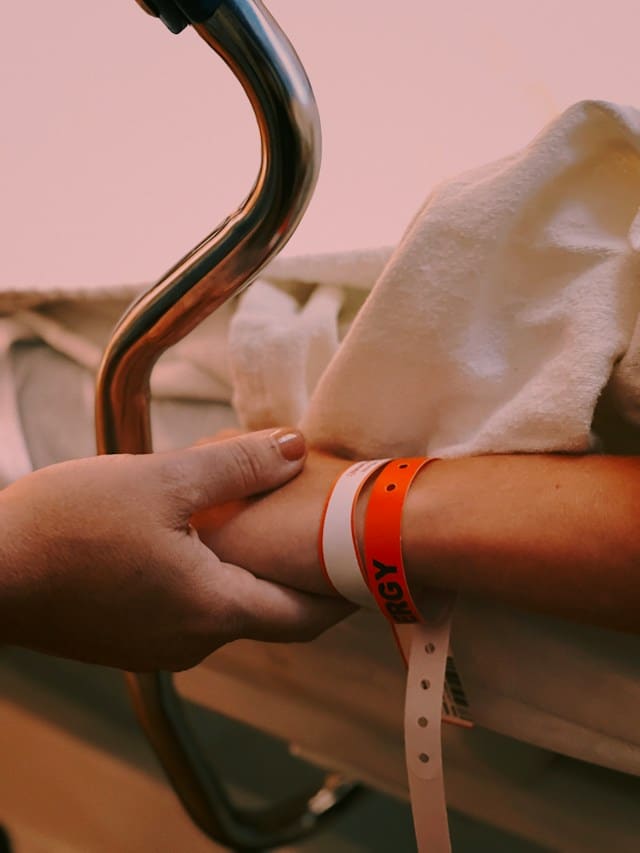When it comes to arthritis, specifically rheumatoid arthritis (RA), the pain can be debilitating. This chronic inflammatory disorder affects the joints in your hands and feet, causing painful swelling, stiffness and loss of function. Living with RA is a constant battle, but there are ways that you can manage your symptoms and improve your quality of life. One such method is through the therapeutic use of water, known as hydrotherapy.
Hydrotherapy: An Overview
Before diving in, let’s take a moment to understand what hydrotherapy is. At its simplest, hydrotherapy is the use of water in the treatment of different types of physical ailments, including arthritis. This therapy involves exercises done in a pool of water, typically heated to a comfortable temperature.
A lire également : What Are the Best Ways to Manage Fatigue in Cancer Recovery?
The buoyancy of the water helps to relieve pressure on the joints and muscles, while the heat aids in muscle relaxation and pain relief. Hydrotherapy exercises can range from gentle, low-impact movements to more vigorous activities, depending on the individual’s condition and physical capabilities.
The Science behind Hydrotherapy and Rheumatoid Arthritis
Hydrotherapy has been used for centuries for therapeutic purposes. But how exactly does it help rheumatoid arthritis patients? Let’s take a closer look at the science.
A découvrir également : What Are the Best Strategies for Managing Endometriosis Symptoms?
Rheumatoid arthritis causes inflammation and pain in the joints. Hydrotherapy works by using the physical properties of water, such as its temperature and pressure, to stimulate blood circulation and reduce muscle tension. This can help to alleviate the symptoms of RA.
According to a study published in PubMed, hydrotherapy can significantly improve the strength and mobility of joints in people with rheumatoid arthritis [doi: 10.1016/j.berh.2014.02.004]. The warm water helps to soothe the joints, while the buoyancy reduces the weight on them, making it easier to perform exercises. This helps to increase the range of motion and flexibility in the joints.
Hydrotherapy Exercises for Rheumatoid Arthritis Patients
It’s not just about being in water; performing specific exercises in the pool can provide targeted relief for RA patients. Here are some exercises that are often recommended for rheumatoid arthritis patients in hydrotherapy sessions.
- Water Walking or Jogging: This is a low-impact exercise that does not put much stress on your joints. It helps to improve cardiovascular health and promotes better joint function.
- Leg Lifts: These are excellent for strengthening your leg muscles. Hold onto the side of the pool and slowly raise and lower each leg.
- Arm Curls: These can be performed with or without a floatation device. They work on your biceps and triceps, improving strength and mobility.
- Pool Push-ups: Using the pool edge or a flotation device, this exercise helps to strengthen the upper body and core.
The Benefits of Hydrotherapy for Rheumatoid Arthritis
Now that we’ve looked at how hydrotherapy works and the exercises involved, let’s explore some of its benefits for people living with rheumatoid arthritis.
Firstly, the buoyant nature of water means that you can perform exercises with less pain. This makes exercise more enjoyable and more manageable for people with RA.
Secondly, the warmth of the water in hydrotherapy can help to alleviate pain and ease stiffness in the joints, making movement easier. This can have a significant impact on your daily activities and overall quality of life.
Thirdly, hydrotherapy can help to increase your strength and flexibility, which can often be compromised in people with RA. This can improve your mobility and function in daily activities.
Lastly, the relaxation aspect of hydrotherapy should not be overlooked. The warm water can have a soothing effect, helping to reduce stress and anxiety, which can often accompany chronic conditions like RA.
As you can see, hydrotherapy offers a range of benefits for people living with rheumatoid arthritis. It’s a gentle yet effective form of exercise that can help to manage pain, improve mobility and enhance overall well-being.
Hydrotherapy vs. Traditional Physical Therapy
Contrasting hydrotherapy with traditional physical therapy can provide a clearer understanding of its unique advantages for rheumatoid arthritis patients. Traditional physical therapy, while beneficial, can sometimes be challenging for those with severe joint pain and inflammation. The exercises often require weight-bearing movements, which could potentially exacerbate the discomfort experienced by RA patients.
On the other hand, hydrotherapy or aquatic therapy occurs in a significantly more forgiving environment. As mentioned, the warm water provides a therapeutic effect by alleviating pain and easing joint stiffness, thus promoting ease of movements. The buoyancy of water reduces the weight exerted on the joints, allowing patients to conduct exercises with less discomfort than on land.
The Cochrane Database of a randomized controlled trial suggests that hydrotherapy can improve the physical function of rheumatoid arthritis patients [doi: 10.1002/14651858.CD001279]. The trial demonstrated that aquatic exercise could positively impact the primary outcome measures of pain, quality of life, and physical function in patients with rheumatoid arthritis.
Moreover, hydrotherapy can be tailored to the specific needs of the patient. A trained physical therapist can adjust the water exercises to ensure they are suitable and beneficial for each individual’s condition. Thus, hydrotherapy provides a more personalized approach to managing rheumatoid arthritis compared to traditional physical therapy.
Safety and Precautions in Hydrotherapy
While hydrotherapy has numerous benefits, it’s not without its risks and precautions. Safety should always be a primary concern when starting a new treatment regime, especially for those with chronic conditions.
Before starting hydrotherapy, it’s crucial to consult with a healthcare provider or a trained physical therapist. They can guide you on the best practices and ensure the exercises are safe and suitable for your specific condition. For example, the temperature of the water is an important factor to consider. While warm water can help soothe your joints, water that’s too hot may lead to discomfort or even burns. Ideally, the water should be comfortably warm, typically around 33-36°C (91-96°F).
Moreover, it’s essential to pace yourself during aquatic exercises. Overexerting oneself in the water can lead to fatigue and increased pain. Always listen to your body and adjust your exercises accordingly.
While spa therapy or a hot tub can be a part of hydrotherapy, be cautious about hygiene. Ensure the pool or tub is well-maintained and clean to prevent infections.
Lastly, always remember that hydrotherapy is not a cure for rheumatoid arthritis. It’s a management tool to help alleviate symptoms, improve mobility and enhance quality of life. It’s best used in conjunction with other treatments recommended by your healthcare provider.
Conclusion
In conclusion, hydrotherapy is a promising and viable option to help manage the symptoms of rheumatoid arthritis. By leveraging the physical properties of water, hydrotherapy can provide pain relief, improved joint mobility, increased muscle strength, and enhanced overall well-being.
However, like any other treatment, it’s essential to utilize hydrotherapy safely and under the guidance of a trained professional. With the right approach, hydrotherapy can become an integral part of the treatment regime for people with arthritis, offering them a better quality of life and increased physical function.
As researchers continue to explore and understand this form of therapy, the future of hydrotherapy seems bright for those living with rheumatoid arthritis. Hydrotherapy, with its gentle approach and numerous benefits, might just offer the relief that many RA patients are seeking.






